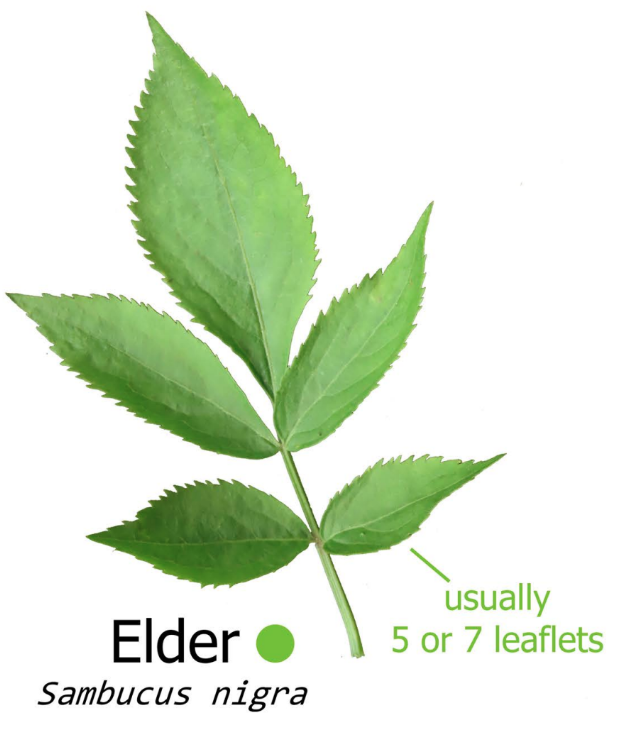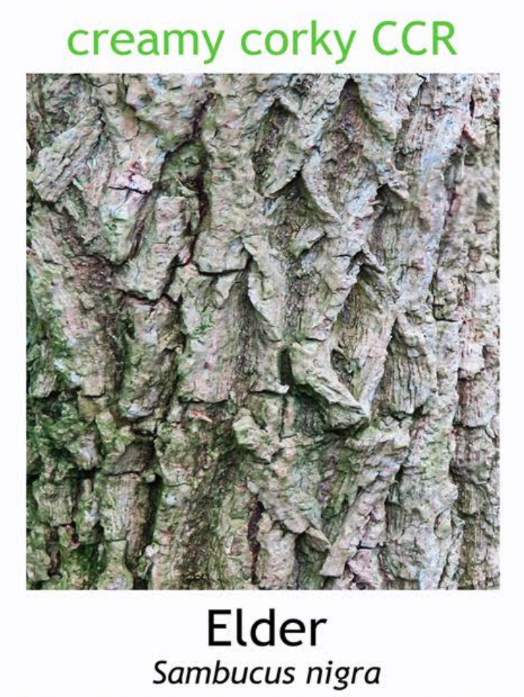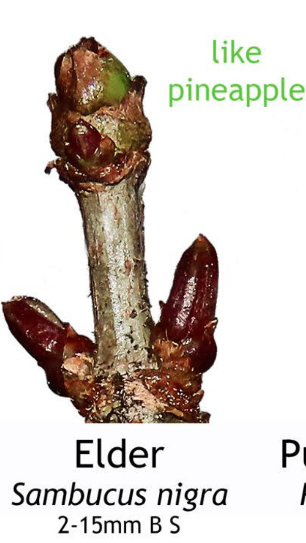A native deciduous tree species in Ireland, commonly found in woodlands, hedgerows, and disturbed habitats.
Recognising the Elder Tree:
-
Leaves: The leaves of the Elder tree are opposite, pinnately compound, and composed of 5-9 leaflets. They are dark green in color and have serrated margins. The leaflets emit an unpleasant odor when crushed.
-
Bark: The bark of the Elder tree is rough, fissured, and greyish-brown in colour. It becomes more deeply furrowed with age.
-
Flowers: Elder trees produce large, flat clusters of creamy-white flowers in late spring to early summer. The flowers have a strong, sweet fragrance and attract pollinators such as bees and butterflies.
-
Fruit: After flowering, Elder trees produce clusters of small, dark purple to black berries known as elderberries. The berries are edible when ripe but are toxic if consumed raw in large quantities.
-
Habitat: Elder trees are commonly found in a variety of habitats, including woodlands, hedgerows, riverbanks, and disturbed areas. They are often associated with other shrub and tree species and are tolerant of a wide range of soil conditions.



5 Interesting Facts about the Elder Tree:
-
Historical and Cultural Significance: The Elder tree has a long history of use in folklore, medicine, and culinary traditions. It was believed to have magical properties and was associated with protection, healing, and spirituality in many cultures.
-
Wildlife Habitat: Elder trees provide habitat and food for a variety of wildlife species. Birds feed on the berries (elderberries), while insects pollinate the flowers and feed on the nectar and pollen. Mammals such as deer may also browse on the foliage.
-
Traditional Uses: Various parts of the Elder tree have been used historically for medicinal, culinary, and practical purposes. The flowers are used to make elderflower cordial, wine, and tea, while the berries are used to make jams, jellies, syrups, and wine. The wood has been used for making tools, musical instruments, and crafts.
-
Nitrogen Fixation: Like other members of the Caprifoliaceae family, Elder trees have the ability to fix nitrogen in the soil through symbiotic relationships with nitrogen-fixing bacteria in their root nodules. This helps enrich the soil and promote the growth of other plant species.
-
Allelopathic Properties: Elder trees release chemicals into the soil through their roots and leaf litter, which can inhibit the growth of competing plant species. This allelopathic (a negative or positive effect on one type of plant, by a chemical produced by another type of plant) effect helps Elder trees maintain dominance in their habitat.
Uses of the Elder Tree:
-
Culinary Uses: The flowers of Elder trees are used in culinary applications to make elderflower cordial, wine, tea, and desserts. The berries are used to make jams, jellies, syrups, and wine, as well as medicinal preparations such as tinctures and extracts.
-
Medicinal Uses: Various parts of the Elder tree, including the flowers, berries, leaves, and bark, have been used in traditional medicine for their antioxidant, anti-inflammatory, and immune-boosting properties. Elderberry syrup and extract are popular remedies for colds, flu, and respiratory infections.
-
Wildlife Habitat: Elder trees contribute to biodiversity by providing habitat and food for a variety of wildlife species. Their presence enhances habitat complexity and provides food, shelter, and nesting sites for birds, insects, and mammals, contributing to overall biodiversity in woodland, hedgerow, and riparian ecosystems.
Contribution to Biodiversity:
-
Habitat Provider: Elder trees create diverse micro-habitats that support a wide range of plant and animal species. Their presence enhances habitat complexity and provides food, shelter, and nesting sites for wildlife, contributing to overall biodiversity in woodland, hedgerow, and riparian ecosystems.
-
Pollinator Support: The fragrant flowers of Elder trees provide an important nectar and pollen source for pollinators such as bees and butterflies. This supports pollinator populations and contributes to the health of ecosystems.
-
Seed Dispersal: Birds that feed on the berries (elderberries) of Elder trees help disperse the seeds over a wide area through their droppings. This promotes the regeneration and spread of Elder trees in natural habitats, contributing to the diversity and resilience of woodland, hedgerow, and riparian ecosystems.
In summary, the Elder tree is recognizable by its compound leaves, clusters of fragrant flowers, and dark purple to black berries. It holds cultural significance, provides valuable resources for wildlife, and contributes to biodiversity and ecosystem health in Ireland's woodlands, hedgerows, and riparian areas. Additionally, it serves as an important food source for birds and other wildlife, supports pollinator populations, and enhances habitat complexity in natural ecosystems.
Images taken from the beautiful posters created by Phil Barnett and you can download these and/or purchase other great designs from his online shop.
